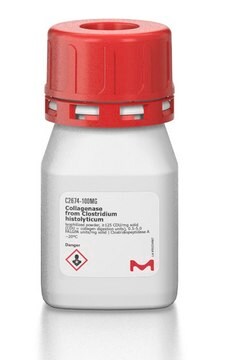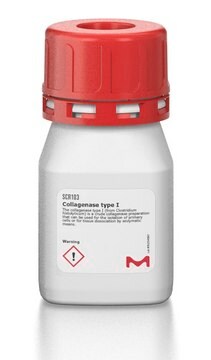Kluczowe dokumenty
D1306
Debrisoquine sulfate
powder, ≥98% (TLC)
Synonim(y):
3,4-Dihydro-2(1H)-isoquinolinecarboximidamide, Debrisoquin sulfate, Ro 5-33071
About This Item
Polecane produkty
Nazwa produktu
Debrisoquine sulfate,
Próba
≥98% (TLC)
Poziom jakości
Formularz
powder
mp
285 °C
rozpuszczalność
H2O: 20 mg/mL (with heat)
temp. przechowywania
room temp
ciąg SMILES
OS(O)(=O)=O.NC(=N)N1CCc2ccccc2C1.NC(=N)N3CCc4ccccc4C3
InChI
1S/2C10H13N3.H2O4S/c2*11-10(12)13-6-5-8-3-1-2-4-9(8)7-13;1-5(2,3)4/h2*1-4H,5-7H2,(H3,11,12);(H2,1,2,3,4)
Klucz InChI
CAYGYVYWRIHZCQ-UHFFFAOYSA-N
informacje o genach
human ... SLC6A2(6530)
Szukasz podobnych produktów? Odwiedź Przewodnik dotyczący porównywania produktów
Działania biochem./fizjol.
Substraty
Hasło ostrzegawcze
Warning
Zwroty wskazujące rodzaj zagrożenia
Zwroty wskazujące środki ostrożności
Klasyfikacja zagrożeń
Acute Tox. 4 Oral
Kod klasy składowania
11 - Combustible Solids
Klasa zagrożenia wodnego (WGK)
WGK 3
Temperatura zapłonu (°F)
Not applicable
Temperatura zapłonu (°C)
Not applicable
Środki ochrony indywidualnej
dust mask type N95 (US), Eyeshields, Gloves
Wybierz jedną z najnowszych wersji:
Masz już ten produkt?
Dokumenty związane z niedawno zakupionymi produktami zostały zamieszczone w Bibliotece dokumentów.
Produkty
Reakcje biotransformacji fazy I zwiększają polarność związku leku, zachodząc głównie w krążeniu wątrobowym.
Phase I biotransformation reactions introduce or expose functional groups on the drug with the goal of increasing the polarity of the compound. Although Phase I drug metabolism occurs in most tissues, the primary and first pass site of metabolism occurs during hepatic circulation.
Nasz zespół naukowców ma doświadczenie we wszystkich obszarach badań, w tym w naukach przyrodniczych, materiałoznawstwie, syntezie chemicznej, chromatografii, analityce i wielu innych dziedzinach.
Skontaktuj się z zespołem ds. pomocy technicznej






